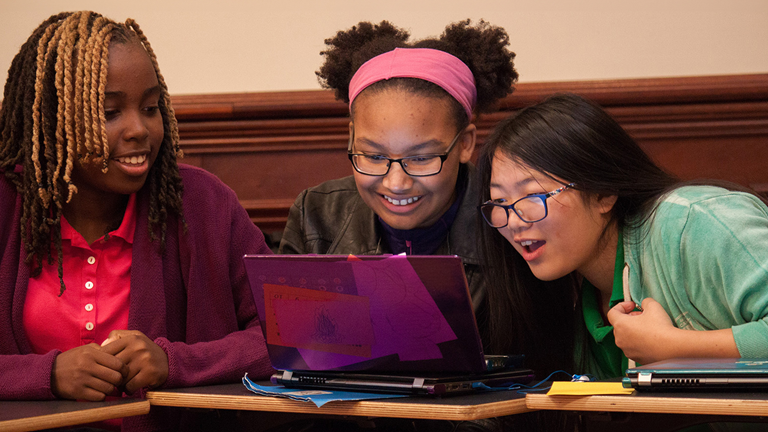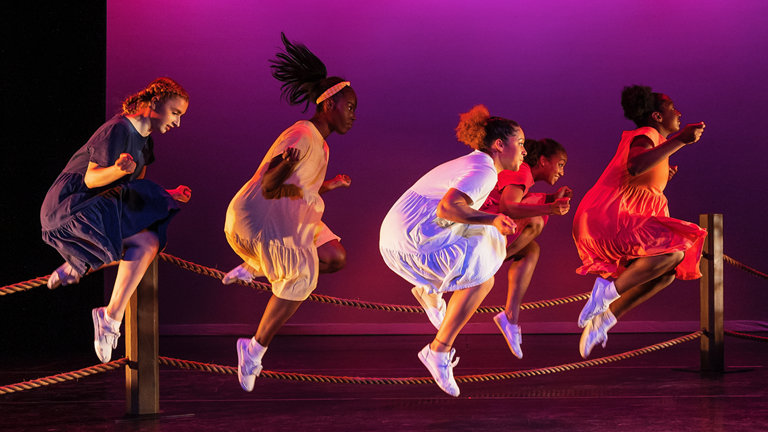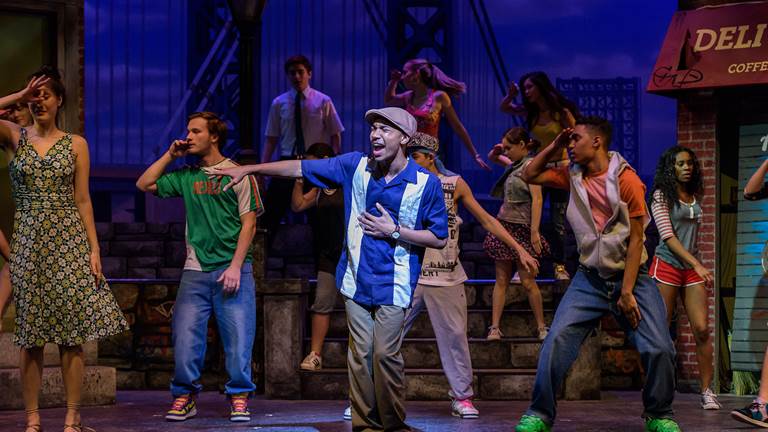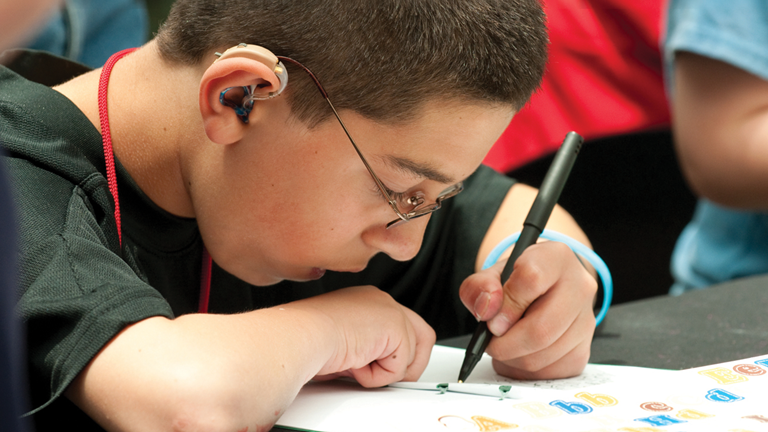Media Know Before You Go: Ballet Rehearsals
This resource offers a quick guide to what you may experience at a ballet rehearsal.
Wed. Dec. 4, 2024
Wed. Dec. 4, 2024 2p.m.
Genre
Performances for Young Audiences

BalletX’s Mapping Out A Sky. Photo by Vikki Sloviter.
BalletX’s Mapping Out A Sky. Photo by Vikki Sloviter.
Enjoy an insider’s look at our visiting companies as they prepare onstage for performance.
BalletX, Philadelphia’s premier contemporary ballet whose dancers were named “among America’s best” by the New York Times, commissions choreographers from around the world to create dance that is “fresh, inclusive, and connects to what people want” (Philadelphia Citizen). Under the direction of Artistic & Executive Director Christine Cox, BalletX has produced nearly 130 world premiere ballets by more than 70 choreographers, a record “few companies can match” (The New York Times). The acclaimed company returns after its sold-out 2019 Kennedy Center debut at DEMO by Damian Woetzel. BalletX presents Jodie Gates’ Beautiful Once, a work created in honor of community, inclusion, and divine resilience set to recorded music by Son Lux; Takehiro Ueyama’s Heroes, which honors the citizens who played a role in Japan’s recovery after World War II and features live music by composers John Adams and Kato Hideki; Matthew Neenan’s Mapping Out a Sky, inspired by the unique rhythms of Stephen Sondheim; and Justin Peck’s Become a Mountain, featuring Baltimore-native composer and musician Dan Deacon performing live alongside members of the Kennedy Center Opera House Orchestra.
December 4, 2024
Eisenhower Theater, recommended for grades 6-12
Estimated duration is approximately two hours with an intermission.
This event is no longer available. Registration for this event has closed.
We’re thrilled that you’ve joined us for a performance this season! We would like to hear from your students and you about the experience. After the performance, follow these steps to share feedback:
Each survey will take approximately five minutes to complete. The results will be used to inform future Kennedy Center Education program planning.ŌĆ»Thank you in advance for sharing your valuable perspective!
This resource offers a quick guide to what you may experience at a ballet rehearsal.
Want to understand how dance works? Learn the five elements that make up the foundation of this art form: body, action, time, space, and energy.
In this grade 3-5 lesson, students will analyze how ballet dancers in┬ĀThe Nutcracker┬Āact out the story/character with movement instead of words.┬ĀStudents will┬Āemotionally and physically tell a story through dance and pantomime.
In this 6-8 lesson, students will be introduced to basic ballet terms, positions, and movements. They will discover the history of ballet, the meaning of keywords, and practice French pronunciation. Students will demonstrate basic ballet positions and movements through planned choreography.
Professional development for educators. Summer intensives for young artists. Teaching artist guided activities. Performances for young audiences. Classroom lesson plans. Arts-focused digital media.
Kennedy Center Education offers a wide array of resources and experiences that inspire, excite, and empower students and young artists, plus the tools and connections to help educators incorporate the arts into classrooms of all types.
Our current teaching and learning priorities include:
A robust collection of articles, videos, and podcasts that allow students of all ages to explore and learn about the arts online.

In-person and virtual performances, along with supporting educational content to help guide learning.

Current approaches to arts integration in the classroom, inclusion, rigor, and adopting an arts integration approach at the school and district level.

An asynchronous online course that invites educators and administrators to think about our students’ disabilities as social and cultural identities that enrich our classrooms and communities.

The Vice President of Education is generously endowed by the
Generous support for educational programs at the Kennedy Center is provided by the U.S. Department of Education.
Gifts and grants to educational programs at the Kennedy Center are provided by The Paul M. Angell Family Foundation; Bank of America; Capital One; The Morris and Gwendolyn Cafritz Foundation; Carnegie Corporation of New York; The Ednah Root Foundation; Harman Family Foundation; William R. Kenan, Jr. Charitable Trust; the Kimsey Endowment; The Kiplinger Foundation; Laird Norton Family Foundation; Lois and Richard England Family Foundation; Dr. Gary Mather and Ms. Christina Co Mather; The Markow Totevy Foundation; Dr. Gerald and Paula McNichols Foundation; The Morningstar Foundation; Myra and Leura Younker Endowment Fund; The Irene Pollin Audience Development and Community Engagement Initiatives;
Prince Charitable Trusts; Dr. Deborah Rose and Dr. Jan A. J. Stolwijk; Rosemary Kennedy Education Fund; The Embassy of the United Arab Emirates; The Victory Foundation; The Volgenau Foundation; Volkswagen Group of America; Jackie Washington; GRoW @ Annenberg and Gregory Annenberg Weingarten and Family; Wells Fargo; and generous contributors to the Abe Fortas Memorial Fund and by a major gift to the fund from the late Carolyn E. Agger, widow of Abe Fortas. Additional support is provided by the National Committee for the Performing Arts..
The content of these programs may have been developed under a grant from the U.S. Department of Education but does not necessarily represent the policy of the U.S. Department of Education. You should not assume endorsement by the federal government.